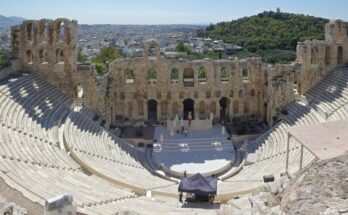Archaeologists have excavated a medieval palace where popes resided prior to the Vatican in Rome becoming the official residence, the Italian Culture Ministry said on Wednesday. This comes ahead of renovations for the 2025 Catholic Holy Year, or Jubilee.
Working in the square outside the Archbasilica of Saint John Lateran in the city center, archaeologists uncovered an architectural palace structure which included walls, thought to have protected the Patriarchio, a staggering basilica brought to life by Emperor Constantine in the 4th century, the ministry said in a statement.
“This is an extraordinarily important find for the city of Rome and its medieval history, as no extensive archaeological excavations have ever been carried out in the square where the palace was found in modern times,” the ministry said.
The original outline of the building, which came after Constantine’s declared tolerance for Christianity in the Roman Empire in 313 AD, was built in stages between the 9th and 13th centuries, and was where the papacy lived until 1305 when it temporarily transferred to Avignon in France, the ministry added.
The Saint John Lateran area is being jazzed up prior to the big Jubilee, a year-long event beginning in December which is expected to draw in more than 30 million people to the Italian capital.
Throughout the Jubilee year, Catholics can gain special indulgences, or remission of their sins, if they make good on certain requirements and engage in charitable work or make pilgrimages.
Other discoveries before the palace in Rome
It is quite common for menial roadwork maintenance to lead to archaeological discoveries in Rome, given the city’s 2,800 year history.
Other excavations being carried out around the Vatican to extend a road tunnel before the Jubilee have recently unearthed traces of an ancient Roman “fullonica,” or laundry, and a porticoed garden thought to have been used by Emperor Caligula.
In January this year, an ancient Roman burial ground filled with treasure was found in central Italy alongside nearly 70 skeletons which were interred in carefully built graves.
Lead archaeologist Emanuele Giannini told CNN that his team had a “faint idea” that the site would be harboring valuable objects, “but the magnitude of the discovery is unmatched.”
The burial ground was unearthed during a pre-construction dig for a solar energy plant and lies on a 52-acre plot of land north of Rome. It is close to the ancient city of Tarquinia, known for Etruscan stone cemeteries dating back to the seventh century BC.
Researchers believe the necropolis was built between the second and fourth centuries AD, during the height of the Roman Empire, reports Live Science. It was likely associated with a nearby “mansion,” an ancient villa where Roman elites rested on their business journeys.



